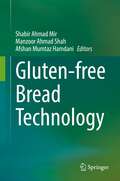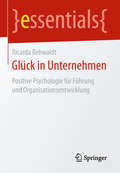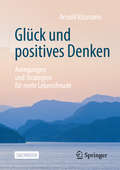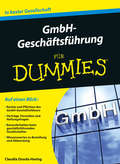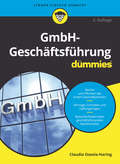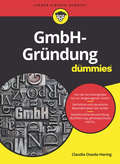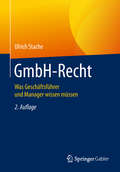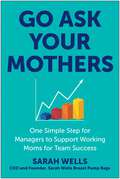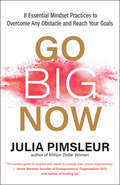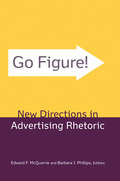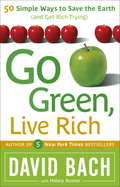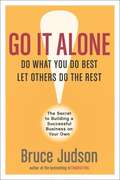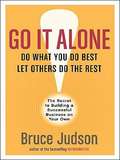- Table View
- List View
Gluten-free Bread Technology
by Manzoor Ahmad Shah Shabir Ahmad Mir Afshan Mumtaz HamdaniMarket trend and the increasing diagnoses of celiac disease have encouraged extensive research into the development of gluten-free breads. Generally, the development of bread without gluten involves the use of diverse ingredients and additives aimed at imitating the viscoelastic properties of gluten and consequently obtaining quality bread products. However, developing gluten-free bread remains a technological challenge due to the key role of gluten in the breadmaking process.Gluten-Free Bread Technology provides an overview of all fundamental issues and key factors associated with gluten-free bread technology, with the emphasis on the most recent findings on the subject. The promising results of the reviewed studies indicate that the gluten-free breads developed possess similar or better sensory attributes than those of control formulations, and some are even comparable to their wheat gluten-based counterparts. Chapters of this book focus on the role of additives, dough handling, and the physical, structural, sensory and nutritional properties of the gluten-free bread. The science of gluten intolerance is explained as well. With all relevant literature gathered and summarized in one place, this text will be an essential resource for both food scientists and industry professionals pursuing gluten-free formulations.
Glück in Unternehmen: Positive Psychologie für Führung und Organisationsentwicklung (essentials)
by Ricarda RehwaldtDieses essential liefert einen kurzen und prägnanten Einstieg in die Bedingungen für Glück und zeigt einen systematischen Transfer in den Arbeitsalltag. Dies ist von hoher Bedeutung, denn die Wettbewerbsfähigkeit eines Unternehmens hängt von seiner Belegschaft ab. Untersuchungen haben gezeigt, dass das psychische Wohlbefinden von Mitarbeitenden maßgeblichen Einfluss auf deren Gesundheit, Motivation und Arbeitsleistung hat. Glückliche Mitarbeitende bringen bessere Ergebnisse, sind motivierter, sorgen für ein gutes Klima in ihren Teams und im Kontakt mit Kunden. Trotzdem wurde Emotionen in Unternehmen bisher nur wenig Bedeutung beigemessen, obwohl diese die entscheidende Grundlage für Motivation, Begeisterung und Führung sind. Das essential zeigt, wie sich wissenschaftlich fundiertes Wissen auf den Unternehmenskontext übertragen lässt. Dazu wurde erstmals ein fünfstufiges Modell zur Steigerung des Glücksempfindens in Unternehmen entwickelt.
Glück und positives Denken: Anregungen und Strategien für mehr Lebensfreude
by Arnold KitzmannDieses Sachbuch stellt verschiedene Strategien zur Steigerung des Glücks und der persönlichen Zufriedenheit vor. Positiv zu denken ist dabei ein wichtiger Weg, um die eigenen Chancen zu verbessern und ein höheres Maß an Lebensqualität zu erreichen. Der Autor zeigt, wie man Aktivität und Entspannung, neue Sichtweisen und bewährte Erfahrungen optimal miteinander verbindet. Das Buch trägt der Komplexität des Begriffs Glück durchgängig Rechnung, indem es das Thema aus verschiedenen Blickwinkeln betrachtet. Aus philosophischer, literarischer, lebenspraktischer und zwischenmenschlicher Sicht befasst es sich auch mit den Auswirkungen einer gewandelten Welt im Zeitalter von Digitalisierung und künstlicher Intelligenz. Lesende erhalten Anregungen für die eigene Lebensweise und sind dazu eingeladen, den wirklich wichtigen Werten im Leben nachzuspüren und herauszufinden, was sie glücklich macht.Das Buch richtet sich an Praktiker und Experten (Personalabteilung, Marketing, Vertrieb, Führung) ebenso wie an Leser, die allgemein am Thema Glück interessiert sind.
Glück, Natur und Moral in der Wirtschaftswissenschaft: Moderne Ökonomik und die Herausforderungen des 21. Jahrhunderts (essentials)
by Heinz WelschDieses essential gibt einen kompakten Überblick darüber, wie die moderne Volkswirtschaftslehre das Zusammenspiel von menschlichem Wohlergehen, Natur und Moral analysiert und sich damit den Herausforderungen des 21. Jahrhunderts – darunter Klimawandel, Artensterben, Nachhaltigkeit und drohende Pandemien – stellt. Das Buch gibt einen Überblick über die aktuelle Forschung und zeigt, dass die natürliche Umwelt für das menschliche Wohlergehen essentiell ist und moralische Werte für umweltverträgliches Verhalten unerlässlich sind.
Glücklich-erfolgreich führen: Führung, durch die alle gewinnen
by Achim PothmannGib deinen Mitarbeitern Tätigkeiten, die sie gerne tun und verhilf ihnen zu Jobglück – und sie werden dich glücklich und erfolgreich machen. Dieser Ratgeber zeigt auf, wie die Steigerung des Jobglücks anderer der eigenen Karriere dienen kann. Die dargestellten Wirkmechanismen basieren auf aktuellen wissenschaftlichen Erkenntnissen aus der Neuropsychologie, Neurobiologie, Positiven Psychologie und angrenzenden Disziplinen, sowie auf zahlreiche lebenspraktischen Fallbeispielen. Sehen Sie selbst, wie sich Erfolg einstellt, wenn eine Führungskraft das Jobglück ihrer Mitarbeiter tatsächlich in den Vordergrund ihrer Betrachtung stellt. Erfahren Sie, welchen fundamentalen Einfluss die Zufriedenheit der Mitarbeiter auf den Erfolg hat und wie sie in Zukunft ein Generalschlüssel für Erfolg sein kann. Erkennen Sie, warum die Haltung der Führungskraft der essenzielle Schlüssel zum Jobglück des Mitarbeiters ist. Dazu stellt der Ratgeber, der auch als Haltungsentwickler bezeichnet werden kann, das Bild von Fred, einem exemplarischen Mitarbeiter vor, mit dessen Hilfe der Leser versteht, dass das Jobglück seines Mitarbeiters eine höchst individuelle und besonders sensibel zu behandelnde Variable ist. Er verdeutlicht, welche Faktoren positiv oder auch störend auf das Mitarbeiterglück einwirken und wie das Führungsverhalten angepasst werden kann. Die anschaulich präsentierten, lebensnahen Beispiele aus dem Arbeitsalltag mit glücklich-erfolgreicher Führung ranken sich um sämtliche Lebensphasen eines Mitarbeiters im Unternehmen, vom Bewerbungsgespräch bis zur Beendigung der Zusammenarbeit. Zielgruppen: Alle an Führung und Jobglück Interessierten, sowie alle Führungsverantwortliche. Zum Autor: Dipl. Kfm. Dr. phil. Achim Pothmann ist Speaker und Berater und begeistert seine Zuhörer und Kunden für eine neue Art der (Zusammen-)Arbeit.
Glücklicher im Beruf ...: ... mit der Kompass-Strategie
by Martin-Niels Däfler Ralph DannhäuserIn diesem Buch geht es um Beruf, Karriere und vor allem um das Glücklichsein. Es gibt allerdings Momente im beruflichen Alltag, da kommen diese drei Begriffe nur schwerlich zusammen und man würde am liebsten alles stehen und liegen lassen. Ab und an ist es völlig normal, unzufrieden zu sein, aber ab wann fängt der Beruf an, richtig weh zu tun? Ab wann ist die Unzufriedenheit so groß, dass ein Jobwechsel die einzige Lösung ist? Diesen Fragen sind die Autoren nachgegangen. Sie haben Studien gewälzt und einen Test zur Ermittlung der eigenen beruflichen Zufriedenheit entwickelt. Auf Basis dieses Tests bieten sie drei Strategien an, wie es gelingt wieder glücklicher und zufrieden im Beruf zu sein.
Glücksfaktor Geld: 10 Gebote für finanzielle Freiheit
by Jean MeyerEs gibt eine Frage, die alle Menschen eint. Diese Frage ist unabhängig von Bildung, Alter und Geschlecht. Sie richtet sich nicht nach Kulturen, nicht nach Werten, diese Frage ist auch losgelöst von Religionen und erst recht von politischen Strukturen. Sie scheint über den Dingen zu schweben, scheint in jedem Menschen verankert. Der Autor hat diese Frage auf seinen Reisen über die Kontinente immer wieder gestellt, und als die Menschen antworteten, sah er in leuchtende Augen, weil alleine die Vorstellung, diese Antwort wäre wahr, ein Glücksfaktor ist. "Wären Sie gerne Millionär?" "Ja!" Reichtum ermöglicht finanzielle Freiheit und finanzielle Freiheit ermöglicht die Erfüllung der eigenen Wünsche. Jean Meyer begleitet Menschen auf dem Weg in die finanzielle Freiheit. "Geld", so sein Plädoyer, "darf kein emotionales Thema sein. Vielmehr leiten Vernunft, Weitsicht und stetige Berechenbarkeit den Weg zur ersten Million. Nicht das schnelle Geld führt zur Freiheit, sondern die kontinuierlich gesetzten Schritte auf einem Weg, der Freude machen kann, an dessen Rand aber ebenso Gefahren lauern." Mit "Glücksfaktor Geld" bringt Jean Meyer deshalb das Thema Geld auf eine berechenbare Ebene und liefert eine probate Anleitung zur messbaren Geldvermehrung. Er verzichtet dabei aber auf Versprechungen, die einfach verpuffen. "Finanzielle Freiheit", so sein Statement, "geschieht nicht über Nacht. Sie ist die Summe aus Entschlusskraft, Zeit und einem hohen Grad an Verantwortung für sich selbst und andere." Meyer versteht damit sein Buch auch als Entzauberung aller selbsternannten Geldgurus dieser Welt und setzt ihnen mit seinen 10 Geboten ein vernünftiges Credo entgegen. Es lautet: Finanzielle Freiheit ist möglich! Aber es bedarf einer klugen, erfolgserprobten Strategie. Das elfte Gebot, das vielleicht wichtigste, beleuchtet die Persönlichkeit des Lesers, seinen individuellen Zeittakt und seine persönlichen Talente und Stärken, die es ihm ermöglichen, die erste Million auf seinem Konto zu zählen. Das Buch ist ein Ratgeber mit konkreten Handlungsanleitungen, Checklisten, Tests und Tipps. Es benennt die Risiken, ebenso löst es hinderliche Glaubenssätze und innere Blockaden im Umgang mit Geld.
GmbH-Geschäftsführung für Dummies (Für Dummies)
by Claudia Ossola-HaringWer GmbH-Geschäftsführer wird, der tut gut daran, sich genau zu informieren, welche Rechten und Pflichten mit dieser Position verbunden sind. Welche Formalien sind zu beachten? Auf welche möglichen Fallstricke sollte man beim Geschäftsführervertrag ein Auge haben? Welche rechtlichen und steuerlichen Implikationen hat das alles? Claudia Ossola-Haring bietet in ihrem Buch insbesondere angehenden GmbH-Geschäftsführern einen verständlichen und praxisnahen Rundumblick. Sie spannt den Bogen von der Bestellung bis zur Amtsniederlegung und geht auch auf den Sonderfall des geschäftsführenden Gesellschafters ein.
GmbH-Geschäftsführung für Dummies (Für Dummies)
by Claudia Ossola-HaringWer GmbH-Geschäftsführer wird, der tut gut daran, sich genau zu informieren, welche Rechten und Pflichten mit dieser Position verbunden sind. Welche Formalien sind zu beachten? Auf welche möglichen Fallstricke sollte man beim Geschäftsführervertrag ein Auge haben? Welche rechtlichen und steuerlichen Implikationen hat das alles? Claudia Ossola-Haring bietet in ihrem Buch insbesondere angehenden GmbH-Geschäftsführern einen verständlichen und praxisnahen Rundumblick. Sie spannt den Bogen von der Bestellung bis zur Amtsniederlegung und geht auch auf den Sonderfall des geschäftsführenden Gesellschafters ein.
GmbH-Gründung für Dummies (Für Dummies)
by Claudia Ossola-HaringDieses Buch begleitet Sie von den Vorüberlegungen, ob die GmbH die richtige Unternehmensform für Ihr Unternehmen ist, über die Eintragung der Gesellschaft, die Formulierung der Satzung und die Bestellung des Geschäftsführers bis zu den ersten Schritten der frisch gebackenen Gesellschaft mit beschränkter Haftung. Claudia Ossola-Haring erklärt, wie Rechte und Pflichten in der GmbH verteilt sind und welche Haftungsfragen, rechtlichen und steuerlichen Besonderheiten zu beachten sind. Dabei geht sie auch auf Stolperfallen ein, in die Sie Dank dieses Buchs nicht mehr tappen werden.
GmbH-Gründung für Ingenieure und Softwareentwickler: Ein Styleguide zur Selbstständigkeit (essentials)
by Falk Wurster Karsten DallmeyerDieses essential beschreibt den Ablauf einer erfolgreichen GmbH-Gründung aus der Perspektive von Softwareingenieuren. Im Vergleich zu anderen Start-up-Sachbüchern werden Strategien und mögliche Lösungswege anhand von Analogien zur Softwarearchitektur aufgezeigt. Der Schwerpunkt liegt dabei vor allem auf der Planung und Spezifikation in der Vorbereitungsphase. Entlang des roten Fadens der Gründungsvorbereitung und Nachgründungsphase werden wichtige Aspekte und Abhängigkeiten zur Entscheidungsfindung beschrieben. Das essential ist keine Ansammlung trockener Checklisten, sondern begleitet unterhaltsam und praxisnah auf dem Weg in die Selbstständigkeit.
GmbH-Handbuch für den Mittelstand
by Heinz-Peter VerspayDie GmbH ist mit mehr als einer Million Gesellschaften die häufigste Gesellschaftsform für Kapitalgesellschaften in Deutschland. Das große Interesse an ihr beruht auf dem Bedürfnis, die aus der Geschäftstätigkeit folgende Haftung der Gesellschafter auszuschließen. Für Verbindlichkeiten der GmbH haftet deren Gläubigern grundsätzlich nur das Gesellschaftsvermögen. Mit diesem Buch werden die Gründung der GmbH einschließlich der Unternehmergesellschaft (haftungsbeschränkt) und die mit dieser Rechtsform verbundenen Besonderheiten bei den bestehenden Gesellschaften für den Praktiker dargestellt. Das Buch informiert Geschäftsführer und Gesellschafter einer GmbH über ihre Funktionen und ihre Rechte und Pflichten.Die Erstauflage dieses Buches war zum Inkrafttreten der großen GmbH-Reform Ende 2008 fertiggestellt worden. Die von den Fachleuten einhellig begrüßte Reform, mit der die Rechtsform der GmbH durch Deregulierung und Modernisierung attraktiver gemacht werden sollte, warein "großer Wurf". Die 3. Auflage kann sich angesichts der Vielzahl der seitdem ergangenen gerichtlichen Entscheidungen auf eine verfestigte Rechtsprechung stützen. Sie umfasst darüber hinaus die zwischenzeitlich erfolgten Änderungen und Erweiterungen der für die GmbH maßgeblichen Gesetzesbestimmungen. Das Buch setzt keine juristischen Vorkenntnisse voraus. Aufgrund der tiefen Gliederung und des ausführlichen Sachverzeichnisses eignet es sich hervorragend als Nachschlagewerk für den Praktiker.
GmbH-Recht: Was Geschäftsführer und Manager wissen müssen
by Ulrich StacheDer erfahrene Rechtsexperte führt anschaulich in das GmbH-Recht ein und beschreibt u. a. wie man eine GmbH errichtet, welche Verantwortung ein Geschäftsführer hat, welche Fragen sich bei Finanzierung und Rechnungslegung stellen oder welche steuerlichen Vorschriften zu berücksichtigen sind.
Go Ask Your Mothers: One Simple Step for Managers to Support Working Moms for Team Success
by Sarah WellsFrom a CEO of a multimillion-dollar company that empowers working moms, this guide gives managers an inside look at what mothers really want from their leaders. In a post-pandemic job market, creating a truly mom-supportive workplace is the ultimate competitive advantage. But there&’s a pervasive problem across workplaces big and small: Managers aren&’t asking new mothers what support they need to transition back to work successfully. At the same time, working moms are afraid to ask for help—resulting in poor employment outcomes for both parties. The solution? Intentional and open conversation, which has to start at the managerial level. Go Ask Your Mothers is a guidebook for leaders at every level and in every sector, offering them: An outline of the struggles new working moms face from a lack of proper accommodations to the wide range of mental and physical postpartum challenges Context for why communication problems can arise between managers and moms A road map for initiating successful conversations with new mothers Proven strategies for facilitating successful transitions back to work for new moms Investing in working mothers is more than just a powerful retention strategy; it&’s an investment in your entire organization&’s success. Now more than ever, we cannot afford to lose these highly valuable employees—and, equipped with the right tools, we won&’t have to.
Go Beyond Investing
by Daniela Beyersdorfer Emilie Billaud Vincent Dessain Lynda M. ApplegateIn 2013, Brigitte Baumann, founder of the Pan-European angel investing provider Go Beyond Investing, reflected on the evolution of her venture and the way forward. Her company, which offered deal flow and training to novice and experienced angel investors and ran investor groups in several European countries, had reached a critical size, and Baumann needed to make a strategic decision to ensure its future growth in an industry that was undergoing rapid competitive and regulatory change. Her options required a decision on whether to keep her venture independent, and use a financing round to grow and scale it to a European leader in early stage investing, or whether to cash out and/or have it evolve more quickly through a partnership or sale. Possibilities included a future sale to a private bank that was looking for ways to expand their investment offerings for high net worth individuals, or joining forces with one of the emerging crowdfunding networks that targeted small investors. All of these options would require adjustments to Go Beyond Investing's strategy, capabilities, financing, and organizational structure.
Go Beyond the Job Description: A Step-by-Step Guide to Optimizing Talents, Skills, and Strengths in Organizations
by Ashley PrisantWhat strengths are your employees leaving untapped, and how can you change that? Go Beyond the Job Description introduces the Talent Engagement Optimization (TEO) framework, a 100-day plan that helps HR professionals and managers leverage the skills and capabilities employees already have but don't fully use at work. With step-by-step guidance, the book shows how to increase motivation, productivity and engagement by aligning individual talent with meaningful organizational goals. It features an online assessment to identify your Talent Engagement Zone, plus practical tools like development plans, transition guides and resource kits to ensure long-term success.This is an ideal resource for time-pressed HR managers seeking to do more with what they already have - people included.
Go Big Now: 8 Essential Mindset Practices to Overcome Any Obstacle and Reach Your Goals
by Julia PimsleurTransform Aspirational Thoughts into Life-Changing Results What&’s the biggest challenge you face if you want to accomplish great things? It&’s getting and keeping the right mindset, according to the hundreds of high achievers Julia Pimsleur has interviewed and worked with as a business coach. In Go Big Now, Pimsleur distills two decades of studying complex mindset practices into eight essential &“mindset keys&” that can be used by anyone to get the Go Big Mindset and achieve ambitious professional and life goals. Pimsleur shares personal stories of how she used these keys to raise venture capital and build multimillion-dollar companies, and illustrates each key with an example from a leader, CEO, or celebrity whose mindset catapulted them to success. You&’ll learn to reframe perceived setbacks, replace unhelpful thoughts and limiting beliefs with empowering ones, and stay motivated to pursue your big goal, even in the face of massive hurdles. With the Go Big Mindset, you&’ll boost your mental resilience and discover how to think your way to bigger, better results.
Go Do!
by Jeremy HarbourA refreshingly simple, easy-to-read guide to getting started in business If you've ever dreamed of starting your own business, this book will give you the information, inspiration, and reassurance you need to get started. It encourages budding entrepreneurs to take the leap into the dark, while shining a bright light on the first six months of a successful start-up. It breaks down what appears to be an Everest-size challenge into a series of small hills for you to conquer. Written by successful entrepreneur Jeremy Harbour, Go Do! argues that the skills and tactics of successful entrepreneurship can't be learnt except by doing. So this book offers the guidance and the confidence you need to just go do it.
Go Downstream: The New Profit Imperative in Manufacturing
by Richard Wise Peter BaumgartnerThe 1990s have been a great time to be in business--unless, that is, you happen to be a manufacturer. As business value has flowed steadily downstream, from producing goods to servicing them, most manufacturers have struggled, unable to boost their profits or stock prices. A few manufacturers, though, are thriving. They've gone beyond the factory gates and have begun competing in downstream markets--where the money is. The authors describe four business models for successful downstream moves. The embedded-services model involves using new technologies to build services into products; Honeywell, for instance, offers a product that ties airplane subsystems together through the use of microprocessors. The comprehensive-services model involves providing a set of services that spans the entire product life cycle, as GE is doing for railroads. The integrated-solutions model is a matter of combining products and services into a single offering, as Nokia has done by helping its cellular-carrier customers deploy their networks. The fourth model, distribution control, involves taking control of lucrative distribution activities; Coke's control of 70% of its U.S. bottling and distribution is a prime example. Moving downstream requires manufacturers to shift their strategic focus from achieving operational excellence to gaining customer allegiance. It also calls for new skills and performance measures. But the rewards can be substantial. Downstream markets often generate 10 to 30 times more revenues than the underlying product sales--and they tend to have higher margins and require fewer assets as well.
Go Figure! New Directions in Advertising Rhetoric
by Edward F. McQuarrie Barbara J. PhillipsRhetorical scholarship has found rich source material in the disciplines of advertising, communications research, and consumer behavior. Advertising, considered as a kind of communication, is distinguished by its focus on causing action. Its goal is not simply to communicate ideas, educate, or persuade, but to move a prospect closer to a purchase. The editors of "Go Figure! New Directions in Advertising Rhetoric" have been involved in developing the scholarship of advertising rhetoric for many years. In this volume they have assembled the most current and authoritative new perspectives on this topic. The chapter authors all present previously unpublished concepts that represent advances beyond what is already known about advertising rhetoric. In the opening and closing chapters editors Ed McQuarrie and Barbara Phillips provide an integrative view of the current state of the art in advertising rhetoric.
Go Green, Live Rich
by David Bach Hillary RosnerLet David Bach show you a whole new way to prosper—by going greenInternationally renowned financial expert and bestselling author David Bach has always urged readers to put their financial lives in line with their values. But what if your values are a cleaner and greener earth? Most people think that “going green” is an expensive choice they can’t afford. Bach is here to say that you can have both: a life in line with your green values and a million dollars in the bank. Go Green, Live Richoutlines fifty ways to make your life, your home, your shopping, and your finances greener—and get rich trying. From driving the right car to making your home energy smart, Bach offers ways to improve the environment while you spend less, save more, earn more, and pay fewer taxes. Best of all, he shows you exactly how to take advantage of the "green wave" in personal finance without the difficult work of evaluating individual stocks. What's more, he will get you thinking about a green business of your own so you can help the world along as it is changing for the better. David Bach is on a mission to teach the world that you can live a great life by living a green life. WithGo Green, Live Rich, you can live in line with your eco-values on the road to financial freedom.
Go Home Email Free: 30 Minute Reads
by Nicholas BateYou're half an hour away from an empty inbox!Why not use your next spare half an hour to skill-up? Each of these short e-books can be read in just 30 minutes. Addressing those painful work problems, and giving practical tools and expert advice to overcome them, the 30 Minute Reads series will make your work-life more productive, less painful and more successful!A clear inbox equals a clear mind. It's not an urban myth, it is possible to go e-mail free, and this succinct practical guide will show you how to achieve it.Also available in a digital bundle with 4 other titles as part of 30 Minute Reads: The business skills collection.Go Home Email Free will help you:Identify the problem and what isn't workingDiscover the 10 Big StrategiesPut in place your super-structured, super-easy, 5-day count-down plan to no more pain.
Go It Alone!
by Bruce JudsonThere is an epidemic of unhappiness in the American workplace. A full 70 percent of workers in the United States report that they are disengaged from their jobs. When asked, "Do you have the opportunity to do what you do best every day?" only 20 percent of nearly 2 million employees said yes. It is no wonder that 56 percent of all Americans dream of starting their own business. So why don't they do so? Because starting one's own business is seen as difficult, expensive, and risky. In this extraordinary book, successful Go It Alone! entrepreneur Bruce Judson explains that the conventional wisdom about starting your own business is stunningly wrong. Using the leverage of technology -- e-mail, the World Wide Web, and the remarkable array of off-the-shelf business services now available -- it is dramatically easier to start your own business. Magnified by these new services, it is also possible to create, for the first time, a highly focused business. Bruce Judson shows you the practical steps that will allow nearly any individual to create a business, often using job skills that seem to require an entire corporation for support. It is no longer necessary to spend time on the tasks that don't add value. It is now possible to stay small but reap big profits. Go-it-alone businesses allow the individual the freedom to concentrate on their greatest skills. After reading this book, your motto will be "Do What You Do Best, Let Others Do the Rest."
Go It Alone!: The Secret to Building a Successful Business on Your Own
by Bruce Judson<p>There is an epidemic of unhappiness in the American workplace. A full 70 percent of workers in the United States report that they are disengaged from their jobs. When asked, "Do you have the opportunity to do what you do best every day?" only 20 percent of nearly 2 million employees said yes. It is no wonder that 56 percent of all Americans dream of starting their own business. So why don't they do so? Because starting one's own business is seen as difficult, expensive, and risky. <p>In this extraordinary book, successful <i>Go It Alone!</i> entrepreneur Bruce Judson explains that the conventional wisdom about starting your own business is stunningly wrong. Using the leverage of technology -- e-mail, the World Wide Web, and the remarkable array of off-the-shelf business services now available -- it is dramatically easier to start your own business. Magnified by these new services, it is also possible to create, for the first time, a highly focused business. <p>Bruce Judson shows you the practical steps that will allow nearly any individual to create a business, often using job skills that seem to require an entire corporation for support. It is no longer necessary to spend time on the tasks that don't add value. It is now possible to stay small but reap big profits. Go-it-alone businesses allow the individual the freedom to concentrate on their greatest skills. After reading this book, your motto will be "Do What You Do Best, Let Others Do the Rest."</p>
